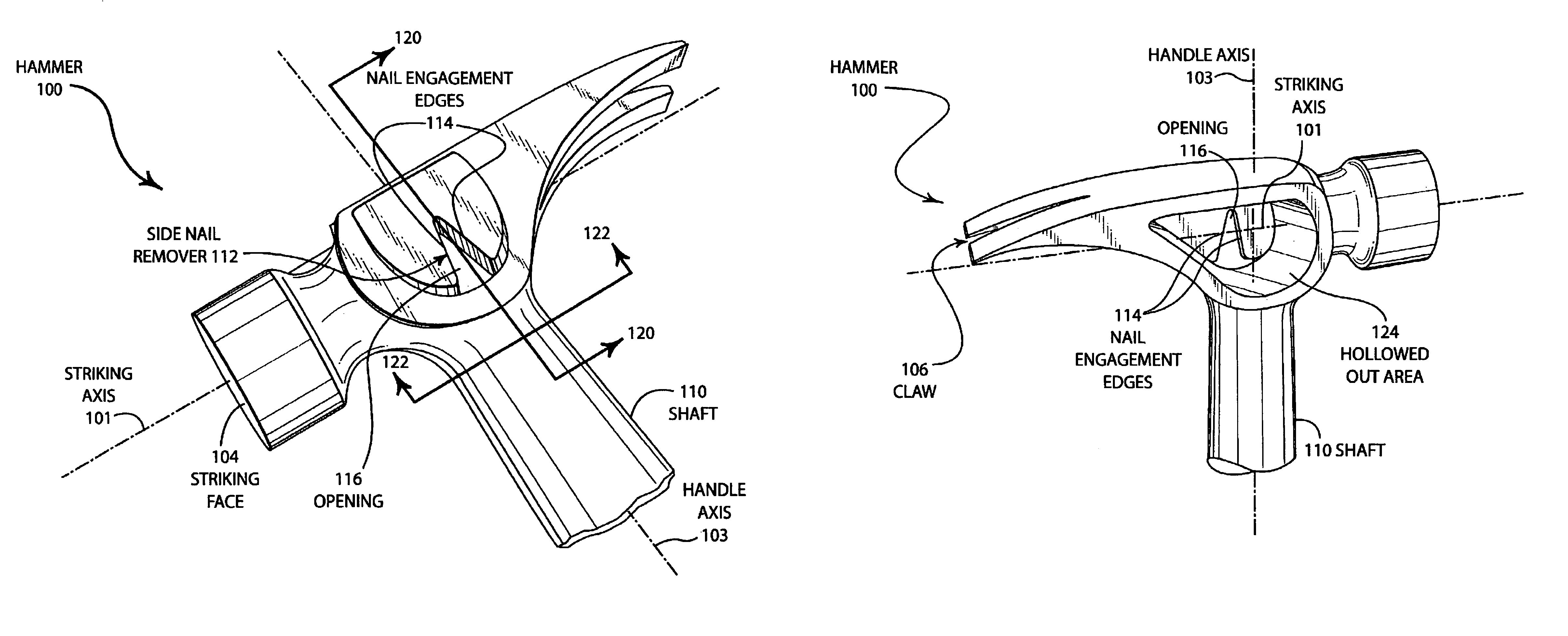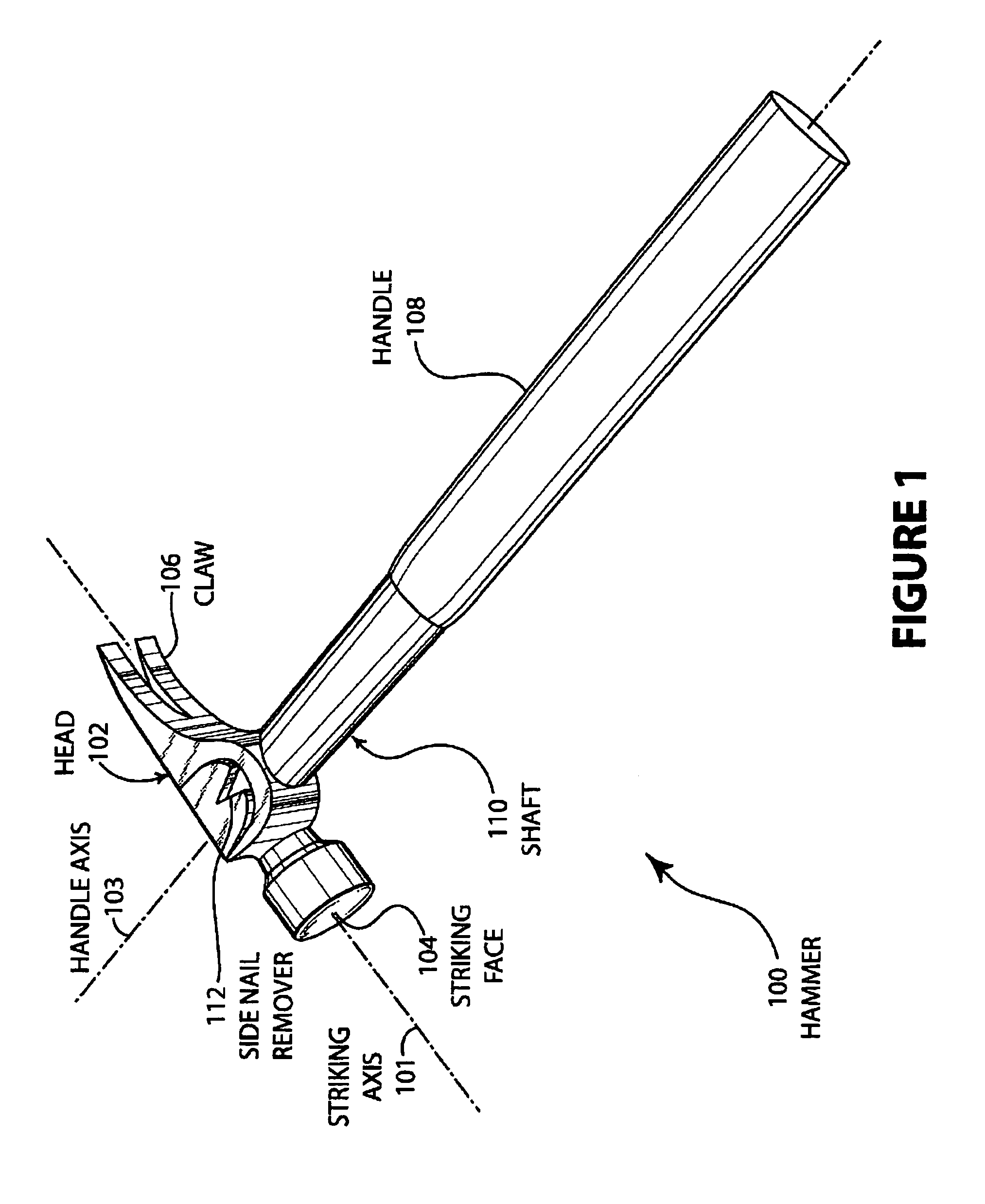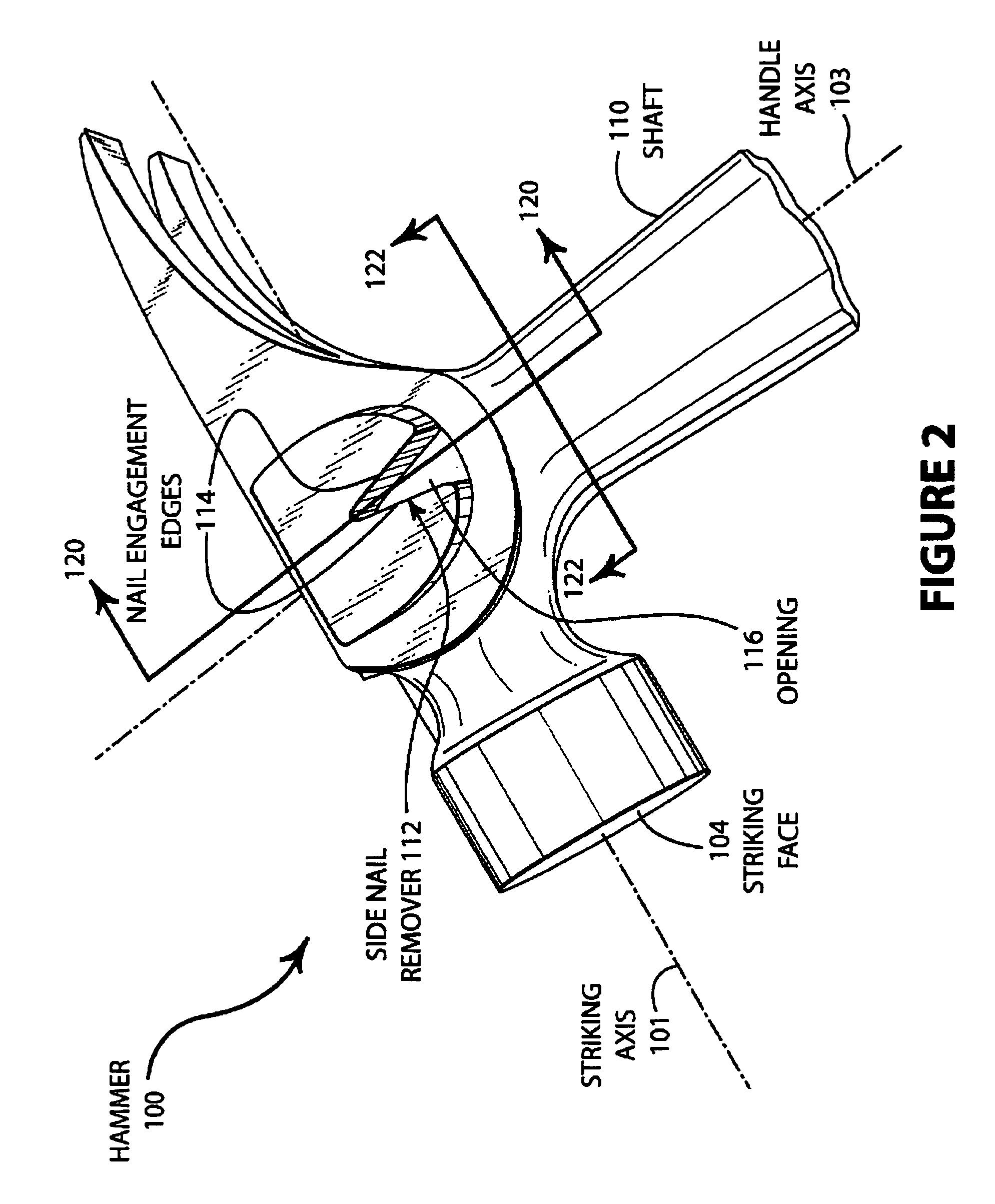Side nail puller
a nail pulling device and side nail technology, applied in the direction of lifting devices, hand hammers, crowbars, etc., can solve the problems of insufficient leverage of conventional claw hammers, difficult nail positioning near the end of boards, etc., and achieve the effect of not adding significant cost or complexity
- Summary
- Abstract
- Description
- Claims
- Application Information
AI Technical Summary
Benefits of technology
Problems solved by technology
Method used
Image
Examples
embodiment 100
[0022]FIG. 1 illustrates an embodiment 100 of the present invention showing a hammer 100 having a head 102 that has a striking face 104 and claw 106. The handle 108 extends from the head 102. The handle shaft 110 is integral to the head 102. The head 102 contains a side nail remover 112. The striking axis 101 and handle axis 103 are shown approximately perpendicular to the striking face 104 and approximately parallel to the shaft 110, respectively.
[0023]FIG. 2 illustrates a closer view of embodiment 100 of a hammer. The striking face 104, shaft 110, and side nail puller 112 are shown.
[0024]The nail puller 112 is comprised of two nail engagement edges 114 and the opening 116. The opening 116 is designed to allow the head of a nail fit inside the opening, and the tapered configuration of the nail engagement edges 114 allows the hammer 100 to be slid over the nail until the shank of the nail is grasped by the edges 114. Once the nail is engaged, the hammer 100 may be rotated about an a...
first embodiment
[0034]FIG. 4A illustrates a cross-sectional view 120 from FIG. 1. The shaft 110 is shown in cross-section along with the striking plane 126. The nail engagement edge 114 is shown as well as the hollowed out area 124.
[0035]The striking plane 126 is the approximate center plane of the striking tool and the plane in which the tool is swung to strike an object. The nail engagement edge 114 is shown slightly canted upward in the illustration, but generally parallel to the striking plane 126. In some embodiments, the nail engagement edge 114 may be very close to parallel to the striking plane 126.
second embodiment
[0036]FIG. 4B illustrates a cross-sectional view 120 from FIG. 1. The shaft 110 is shown in cross-section along with the striking plane 126. The nail engagement edge 114 is also shown as well as the hollowed out are 124.
[0037]The nail engagement edge 114 is curved upward in a convex manner, when viewed from the working surface. The convex shape of nail engagement edge 114 may allow the side nail puller 112 to dig into a substrate, such as wood, and engage a nail head. The shape may be a similar design as for a ‘cat's paw’ or similar nail extracting tools.
[0038]FIG. 5A illustrates a first embodiment of a cross-sectional view 122 from FIG. 1. The shaft 110 is shown in cross-section along with the striking plane 126. The nail engagement edges 114 are formed by the surface 128, which is substantially flat.
[0039]FIG. 5B illustrates a second embodiment of a cross-sectional view 122 from FIG. 1. The shaft 110 is shown in cross-section along with the striking plane 126. The nail engagement ...
PUM
 Login to View More
Login to View More Abstract
Description
Claims
Application Information
 Login to View More
Login to View More - R&D
- Intellectual Property
- Life Sciences
- Materials
- Tech Scout
- Unparalleled Data Quality
- Higher Quality Content
- 60% Fewer Hallucinations
Browse by: Latest US Patents, China's latest patents, Technical Efficacy Thesaurus, Application Domain, Technology Topic, Popular Technical Reports.
© 2025 PatSnap. All rights reserved.Legal|Privacy policy|Modern Slavery Act Transparency Statement|Sitemap|About US| Contact US: help@patsnap.com



